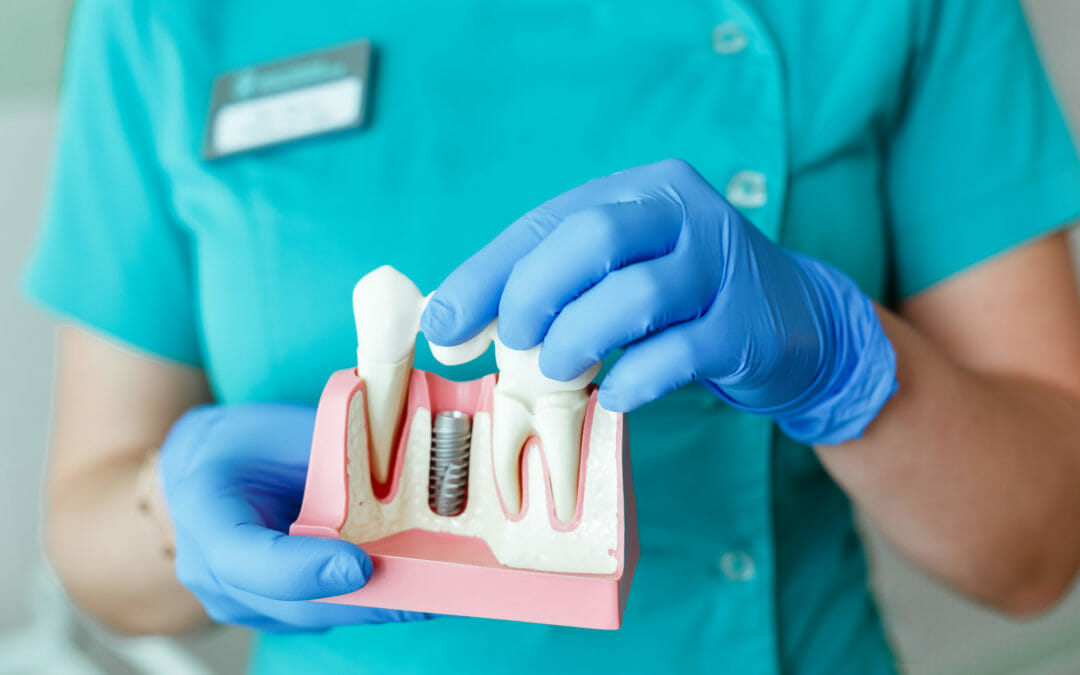If you have lost a tooth or several teeth, getting dental implants is a great way to replace them. When you have missing teeth, chewing and talking can be more difficult. It can also change the way your face looks and allow the bone that kept the tooth in place to deteriorate. There are many choices available for replacing teeth, but dental implants come with a lot of benefits for patients that have made them a popular choice.
The types of dental implants available have grown as the technology has improved. With continuous improvement to the process and the results, patients can get the type of dental implants they need that are perfect for their unique situation. All dental implants are used to restore teeth that have been lost, but different types do this in various ways. The positioning of the implants and the materials used differ in the types of implants.
Endosteal Dental Implants
When you get an endosteal implant, it is a type that is implanted into the jawbone. A titanium post is implanted during oral surgery that looks like a screw. Also called a root form implant, this implant type is the most common one used because it is strong and durable. The screw fuses with the bone as it heals, allowing the post to stay in place for life. This type of implant also keeps the bone around it from deteriorating as it would do without a tooth or an implant to keep it in place.
Endosteal implants have many benefits, but they do require the patient to have a lot of bone so that it can hold and fuse with the titanium screw. If a tooth has been missing for a long time, the bone will have deteriorated, and there will be a need for a bone graft to build up that area of bone. Many patients haven’t had a tooth missing for long but still have too little bone density to hold the implant post, and they also need a bone graft to increase the density of the bone.
Subperiosteal Dental Implants
While endosteal implants are placed directly into the jawbone, subperiosteal implants use a very different method of implantation. These implants are not implanted into the jaw. Instead, they are placed underneath the gums. This is a method that can be used when a patient wants an implant but doesn’t have enough bone density to hold it and doesn’t want to get a bone graft.
Dentist will do an assessment of the bone density of the patient’s jaw to determine whether the patient can get an implant that is placed in the jawbone or may need a subperiosteal implant instead. These implants often come down to the patient’s preferences for their treatment. This type of implant isn’t used very often, but it is sometimes a good option for certain patients.
Single-Tooth Implants
This type of implant is a single implant replacement for one missing tooth. It uses the titanium post implanted into the jaw and is topped with an abutment that will attach the crown to the post. The crown is specially made just for your mouth and is created to look just like it’s your natural tooth. They are matched to your teeth, and you have the final say over which color they are. They also have the texture and shine of regular teeth. When you have a single dental implant, no one looking at you will be able to tell that you have it. It will blend in that well with the rest of your teeth.
Implant-Supported Bridge
If you have several teeth missing, getting an implant-supported bridge may be right for you. With this implant type, the missing teeth are replaced by a bridge that is anchored by two dental implants. There is one implant at each end of the bridge to hold it in place permanently. With implants to anchor the bridge, it won’t move and will be highly durable. In between the two implants are the teeth that will replace the missing teeth in the middle. These are not implants and instead sit on top of the gums.
All-on-Four and Three-on-Six Dental implants
When you are missing all of your teeth on either the top arch or bottom arch of your mouth, getting an all-on-four dental implant may be right for you. These implants use just four implants in order to replace all of the teeth. Four titanium screws are implanted into the jaw, and an entire arch or teeth is then fitted to those posts. If you are missing all of those teeth, this implant is a great way to replace them all without the need for one post to be implanted for every tooth. These are permanent dentures that can only be removed at the dental office.
A three-on-six dental implant uses the same basic idea as the all-on-four. However, instead of four implants to support all of the new teeth, this method uses three dental bridges that are all supported by six implants. This is significantly fewer implants than you would need if you were to get individual implants.
If you are interested in getting dental implants to replace one tooth or many, contact us at DFW Oral Surgeons to get a consultation about your missing teeth and the best options for you.

